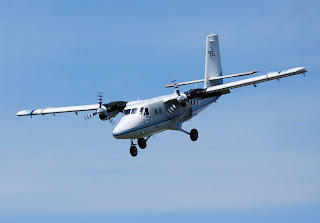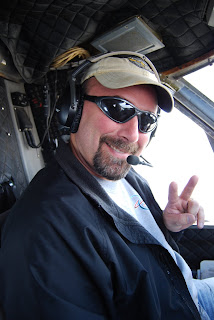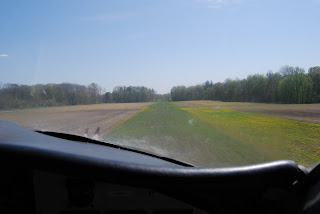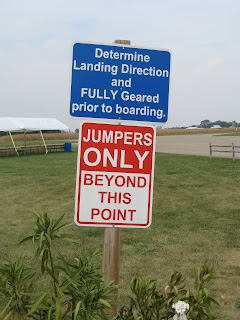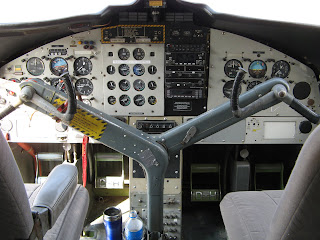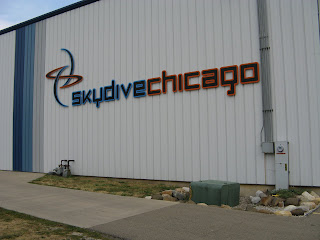This is a regular blog post. Show notes and links to episode audio appear in the other entries.
Flew another couple of loads of skydivers yesterday with Skydive Radio co-founder and co-host Dave Schwartz in a Skydive Chicago Twin Otter at Kunstman Airfield, home of Midwest Freefall Sport Parachute Club.
I arrived around noon, about 10 minutes before Dave returned from Romeo after having picked up fuel. This is a shot of the Otter on approach to the field. The wind was fairly light, so landing direction on the 18-36 grass runway was pretty arbitrary.
There’s Dave. Great guy. Always willing to give you the right seat so long as operations, safety, and other circumstances allow. He’s the first guy to tell you how much he appreciated it when people gave him the right seat during his early flying career and he gives back by returning that favor down the line to the next generation (which, as a new multi driver with only about 200 hours TT, includes me).
In case you thought that Dave’s patter on the two loads that appeared in episodes earlier this year was a one-time prepared thing, it’s not. Same checklists, same procedures, and same safety culture. Really neat to fly with him.
Here’s yours truly in the left seat with Dave behind the camera.
The takeoff run with 20 or so people in the back. Yoke in your lap, full power, release the brakes, and keep get up as soon as possible. The treeline does come at you rather menacingly, but there’s never any real doubt by the time you get close. The Otter climbs very well and you’re to 13,000 feet or more before you know it.
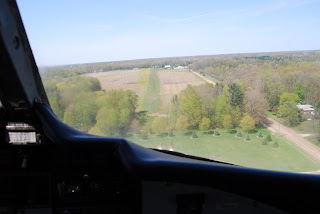
Here’s the approach to landing, coming the other way. Like I said, the wind wasn’t really a factor, so we landed on 36, the better to roll out the loading area at the north end of the field. This really showed off the Otter’s short field landing characteristics.
Another post coming soon covering the drop zone.
